
Roots
The very strands that crown us carry echoes of ancestral wisdom. They are not merely protein structures but living archives, holding stories whispered through generations, resilience forged in landscapes both verdant and harsh. For those whose hair dances with curls, coils, and waves, this connection to the past is particularly potent. Our textured hair, often seen through modern lenses of styling and product, is in truth a continuous narrative, a heritage that speaks of survival, beauty, and communal strength.
We stand at a compelling crossroads, considering how time-honored practices of coloring might nourish contemporary textured hair care routines. This inquiry is not a simple comparison of old versus new; rather, it seeks a deeper understanding, inviting a dialogue between ancient botanical lore and today’s scientific insights. It is a re-acquaintance with the source, a recognition that the soil from which our ancestors drew their hues might yet hold the pigments for our present vitality.

Hair Anatomy and Ancestral Wisdom
At its fundamental core, textured hair, like all hair, comprises keratinized protein. Yet, its helical twists and turns, its unique elliptical cross-section, bestow upon it distinct qualities. These qualities — from its propensity for dryness owing to the difficulty of natural oils traveling down the curl, to its surprising tensile strength when cared for thoughtfully — were observed and understood by those who came before us. Ancestral communities, lacking microscopes and molecular diagrams, possessed an intuitive grasp of hair’s inherent needs.
They saw dryness not as a flaw, but as a condition calling for specific oils and protective styles. They recognized the collective vulnerability of individual strands, prompting communal grooming rituals that reinforced both hair health and social bonds.
The hair shaft’s cuticle, the outermost layer of overlapping scales, dictates much of hair’s behavior. In highly coiled hair, these scales are often more lifted, allowing for more moisture loss. Traditional hair coloring methods, particularly those derived from plants, often work by depositing color onto or within this cuticle layer without forcefully opening it in the way many synthetic dyes do.
This gentler interaction can potentially aid in maintaining cuticle integrity, an important consideration for textured hair that already faces moisture retention challenges. Understanding this basic structure, and how it differs across various hair textures, provides a foundation for appreciating why traditional approaches often proved so effective.
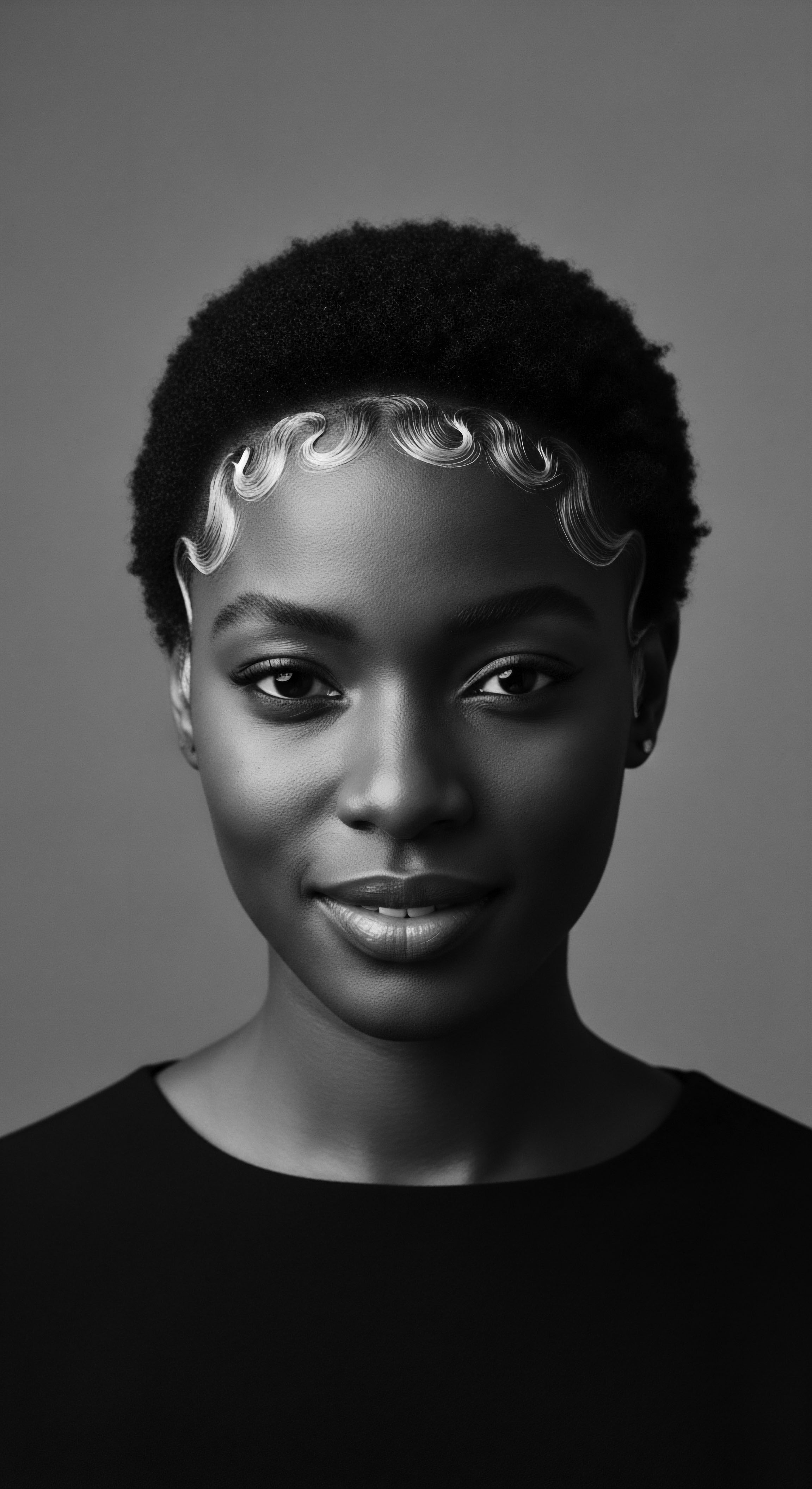
Textured Hair Classification and Cultural Significance
Modern textured hair classification systems, categorizing hair by curl pattern from wavy (Type 2) to coily (Type 4), serve as useful descriptive tools. However, these frameworks often fall short of capturing the rich, symbolic classifications held by various communities throughout history. In many African societies, hair was not simply a biological feature; it was a profound symbol of identity, status, age, marital state, and spiritual connection.
A person’s hairstyle could tell a story, indicating their tribe, social standing, or even readiness for war (BLAM UK CIC, 2022). The colors applied to hair were part of this visual language.
Consider the Yoruba People, whose elaborate hairstyles conveyed intricate meanings. Indigo, derived from the elu plant, was a cherished dye, used for textiles and also for hair, symbolizing love and cultural belonging. (Yoruba Indigo,; Incar Petroleum, 2024).
Similarly, the Igbo People used colored muds and powders, such as yellow and red camwood paste, to adorn hair, signifying pride and beauty, and reflecting social or spiritual affiliations (Ozi Ikoro, 2024), (SCOREline, 2024). These traditional colorants did more than alter hue; they actively participated in a larger system of visual communication, reinforcing communal ties and individual expressions within a deeply rooted heritage.
Hair stands as a living chronicle, its texture and adornment speaking volumes of ancestral wisdom and enduring cultural identity.
The very lexicon surrounding textured hair has deep roots. Terms like ‘cornrows,’ derived from patterns resembling rows of corn, or ‘locs,’ a modern term for matted, intertwined hair that echoes ancient spiritual practices across continents, carry the weight of generations. When we consider traditional coloring, we are not simply adding pigment; we are participating in a conversation that spans centuries, a dialogue with our ancestors who understood hair not as an isolated cosmetic canvas, but as an integral extension of self and community. The connection between hair and ancestral identity remains potent, offering a lens through which to view not only outward appearance, but also inner well-being.

Historical Hair Pigments and Hair Cycles
Hair growth cycles, the anagen (growth), catagen (transition), and telogen (resting) phases, influence how any colorant interacts with the hair over time. Traditional methods often involved repeated applications, building color gradually and supporting the hair through its natural life cycle. This contrasted with the often harsh, rapid chemical alterations that arrived much later. Ancestral practices understood that healthy hair growth stemmed from a nurtured scalp and balanced overall well-being.
The pigments used in ancient times were drawn from the natural world. Henna ( Lawsonia inermis ), perhaps the most globally recognized, yielded red-brown tones and was utilized across North Africa, the Middle East, and South Asia for its dyeing and conditioning properties (Reshma Beauty, 2024). Beyond color, henna was valued for its ability to strengthen hair and soothe the scalp (Reshma Beauty, 2024), (Anker Coiffeur, 2024). Indigo ( Indigofera tinctoria ), often used with henna, provided darker shades, extending the palette (Anker Coiffeur, 2024), (22 Ayur, 2022).
The history of ochre as a hair pigment is also widespread; in Ancient China, it was mixed with black ink for hair coloring, and various indigenous cultures used earth pigments for vibrant shades (Skillshare Blog, 2022), (RPGnet Forums, 2025). These examples illustrate an elemental relationship between humanity and the earth, where hair was colored with what the land offered, a testament to a deep-seated connection to natural resources.
| Traditional Colorant Otjize (Ochre & Butterfat) |
| Geographical/Cultural Origin Himba, Namibia |
| Primary Hue & Additional Properties Reddish-brown; sun protection, insect repellent, symbolic of land/blood (The Guardian Nigeria News, 2022), (Wikipedia, 2023). |
| Modern Parallel/Relevance Natural sunscreens, moisturizing hair masks; connection to identity. |
| Traditional Colorant Henna (Lawsonia inermis) |
| Geographical/Cultural Origin North Africa, Middle East, South Asia |
| Primary Hue & Additional Properties Reddish-brown; conditioning, strengthening, scalp soothing (Reshma Beauty, 2024), (Anker Coiffeur, 2024). |
| Modern Parallel/Relevance Plant-based hair dyes, protein treatments, scalp care. |
| Traditional Colorant Indigo (Indigofera tinctoria) |
| Geographical/Cultural Origin West Africa (Yoruba), India, Middle East |
| Primary Hue & Additional Properties Blue-black (often with henna for darker brown); cultural significance, medicinal uses (Yoruba Indigo,), (Incar Petroleum, 2024). |
| Modern Parallel/Relevance Darkening agents in natural hair dyes; focus on scalp health. |
| Traditional Colorant Camwood (Baphia nitida) |
| Geographical/Cultural Origin West Africa (Igbo) |
| Primary Hue & Additional Properties Red; used as cosmetic, ceremonial paint (Ozi Ikoro, 2024), (SCOREline, 2024). |
| Modern Parallel/Relevance Natural cosmetic pigments, ceremonial body art. |
| Traditional Colorant Walnut Extract (Juglans regia) |
| Geographical/Cultural Origin Europe, Western Asia |
| Primary Hue & Additional Properties Dark brown/black; historical use for dyeing hair and textiles (Marianopolis College,). |
| Modern Parallel/Relevance Natural darkening rinses, plant-based color formulations. |
| Traditional Colorant This selection illustrates the profound historical reliance on natural resources for hair adornment and holistic well-being, grounding contemporary practices in a rich heritage. |

Ritual
The act of coloring hair, in ancient contexts, was seldom a solitary or purely aesthetic undertaking. It was often a ritual, a communal gathering, a moment steeped in tradition and meaning. When we speak of enhancing modern textured hair care routines with traditional coloring methods, we address more than just the application of pigment; we address the re-integration of intention, patience, and reverence that characterized these ancestral practices.
The transformation of hue became intertwined with the transformation of identity, the marking of rites of passage, and the assertion of belonging. This historical perspective shapes our understanding of how these methods might elevate today’s routines beyond mere surface changes.

Coloring as a Cultural Assertion
For communities whose hair was deeply symbolic, coloring held a weight of cultural assertion. The Himba women of Namibia, with their distinctive reddish hair and skin, apply otjize, a paste of butterfat, red ochre, and aromatic resin (Wikipedia, 2023), (The Guardian Nigeria News, 2022). This is not simply a cosmetic choice; it is a powerful statement of their heritage and resilience. The otjize serves as sun protection, insect repellent, and a symbol of their connection to the earth and their lineage (The Guardian Nigeria News, 2022), (Universidad Complutense de Madrid, 2024).
This practice, dating back centuries, exemplifies how traditional coloring was functional, symbolic, and deeply integrated into daily and ceremonial life (EblackMedia, 2024). It is a compelling instance of how a seemingly simple act of adornment carries layers of meaning, protecting both physical well-being and cultural continuity (Jacobson & Van Der Merwe, 2008, p. 250).
Traditional hair coloring transcended mere aesthetics, serving as a profound expression of communal identity and personal narrative.
This approach presents a stark contrast to the often rapid, chemically-driven modern coloring processes that can strip hair of its natural properties. Traditional coloring, with its reliance on natural elements and often lengthy application times, demanded a slower pace, fostering a meditative ritual around hair care. This slower pace, a deliberate commitment of time, allowed for the incorporation of other hair-supporting activities, such as deep conditioning with oils or gentle manipulation, making the coloring itself part of a broader health regimen.
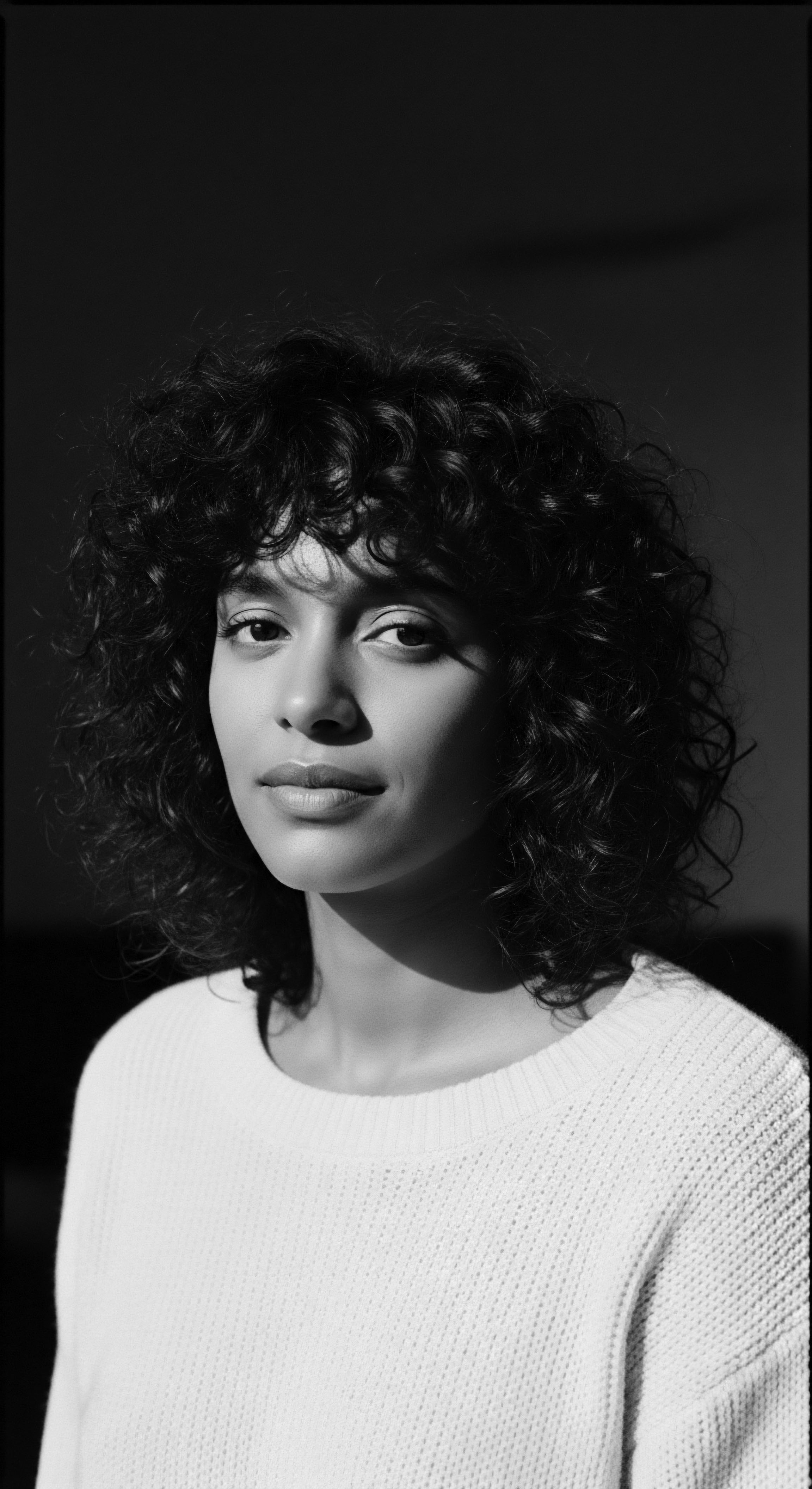
Does Traditional Hair Coloring Promote Hair Health?
Many traditional hair coloring agents derive from plants and other natural sources, offering benefits beyond simple color deposition. Unlike synthetic dyes, which often use ammonia and peroxide to open the hair cuticle and penetrate the cortex, plant-based dyes typically deposit pigments onto the outer layers of the hair shaft (Anker Coiffeur, 2024). This difference in mechanism is significant for textured hair, which benefits greatly from preserved cuticle integrity to retain moisture.
Consider the following aspects where traditional coloring methods can contribute to textured hair routines:
- Protein Reinforcement ❉ Henna, for instance, contains tannic acids that temporarily bind to the hair’s keratin, adding a protective layer (Reshma Beauty, 2024). This can lend strength and reduce breakage, particularly valuable for delicate coils and curls.
- Scalp Wellness ❉ Many historical colorants, like amla (Indian gooseberry) used in Ayurvedic practices, were also revered for their medicinal properties. These substances could soothe irritated scalps, possess anti-inflammatory actions, and even reduce dandruff (22 Ayur, 2022), (Rthvi, 2024). A healthy scalp provides the foundation for healthy hair growth.
- Conditioning and Shine ❉ Plant-based dyes often leave a coating on the hair, enhancing its natural shine and providing a conditioning effect. This contrasts with chemical dyes that can leave hair dry and brittle (Cultivator Natural Products, 2024). The natural oils present in many traditional preparations, such as palm oil used by the Igbo people, also contributed to hair lubrication and luster (Ozi Ikoro, 2024), (SCOREline, 2024).

Integrating Ancestral Colorants into Modern Regimens
Integrating these ancestral methods does not necessitate abandoning all modern products. Rather, it speaks to a discerning approach, selecting elements that serve hair health and honor heritage. For instance, a pre-poo with a nourishing oil, like those historically used by Indigenous communities (Hairmetto, 2020), could precede a henna application. Similarly, incorporating indigo for darker tones can follow a henna treatment, building depth of color while minimizing harsh chemical exposure (Reshma Beauty, 2024).
The application of traditional colorants can be adapted to suit modern schedules while retaining their beneficial impact. This might mean preparing mixtures in advance, dedicating a specific day for the longer process, or simply incorporating natural color-enhancing rinses into regular wash days. The goal is a seamless fusion, where the wisdom of the past becomes a vibrant component of present-day care.
| Attribute Mechanism |
| Traditional Natural Dyes (e.g. Henna, Indigo) Typically coats cuticle or deposits color within outer layers (Anker Coiffeur, 2024). |
| Modern Synthetic Dyes (e.g. Permanent Oxidative) Opens cuticle with alkaline agents (ammonia), chemicals penetrate cortex (Anker Coiffeur, 2024). |
| Attribute Cuticle Impact |
| Traditional Natural Dyes (e.g. Henna, Indigo) Less disruptive, helps maintain cuticle integrity (Cultivator Natural Products, 2024). |
| Modern Synthetic Dyes (e.g. Permanent Oxidative) Can lift and damage cuticle, leading to increased porosity and moisture loss (Anker Coiffeur, 2024). |
| Attribute Hair Protein |
| Traditional Natural Dyes (e.g. Henna, Indigo) Can bind to keratin, adding a protective layer and strengthening the strand (Reshma Beauty, 2024). |
| Modern Synthetic Dyes (e.g. Permanent Oxidative) Can degrade protein structures, leading to dryness and breakage (Anker Coiffeur, 2024). |
| Attribute Scalp Health |
| Traditional Natural Dyes (e.g. Henna, Indigo) Often contains medicinal properties, soothing and conditioning the scalp (22 Ayur, 2022). |
| Modern Synthetic Dyes (e.g. Permanent Oxidative) Potential for irritation, allergies, and chemical burns due to harsh chemicals (Anker Coiffeur, 2024). |
| Attribute Color Longevity |
| Traditional Natural Dyes (e.g. Henna, Indigo) Semi-permanent, fades gradually, can be built up over time (Cultivator Natural Products, 2024). |
| Modern Synthetic Dyes (e.g. Permanent Oxidative) Permanent, but can lead to stark regrowth lines (Cultivator Natural Products, 2024). |
| Attribute Understanding these fundamental differences informs decisions about hair health and honors methods that align with hair's natural resilience. |
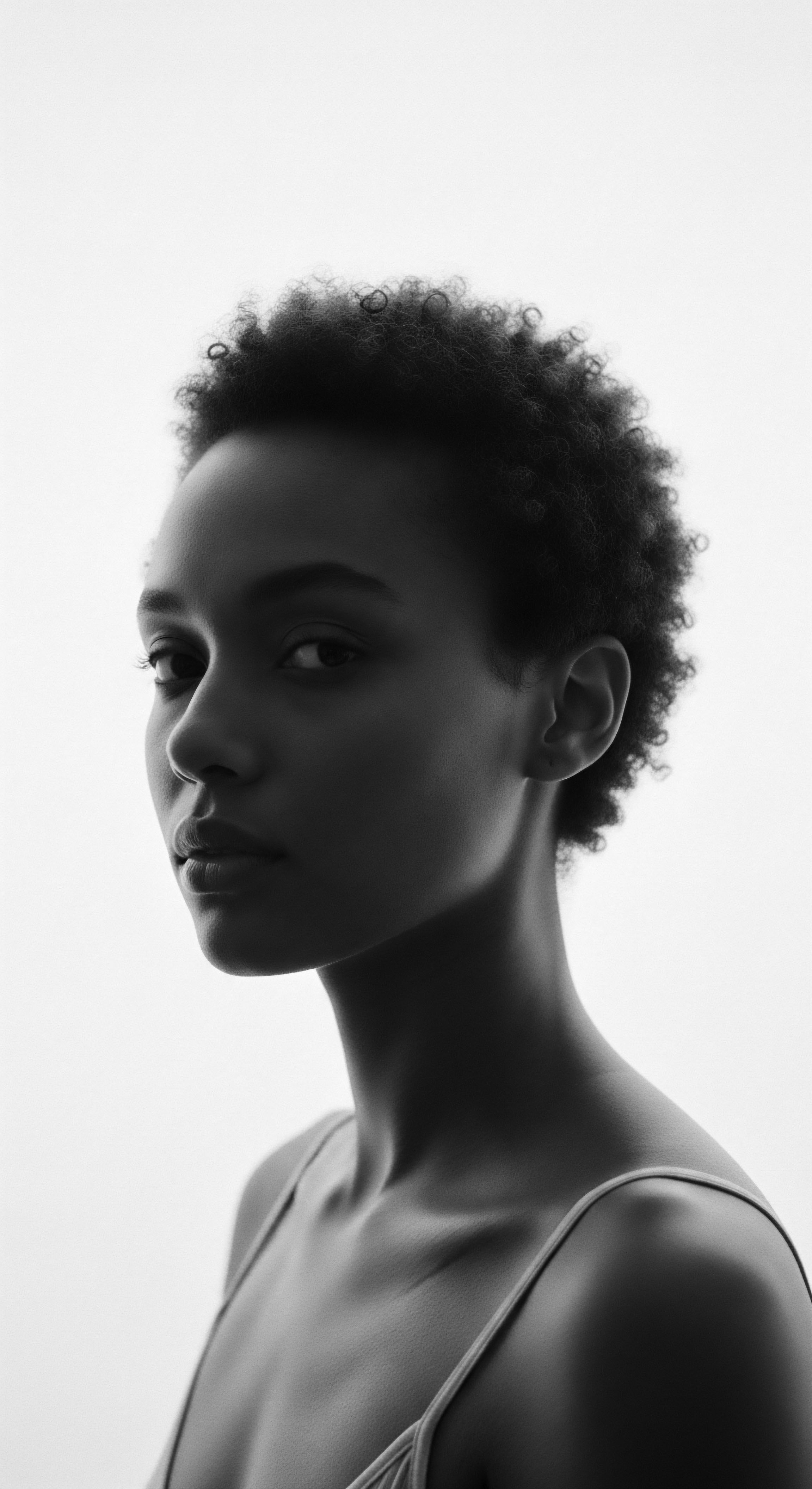
Relay
To consider the enduring relationship between traditional hair coloring and modern textured hair care routines is to acknowledge a living heritage, a continuous flow of wisdom from past to present. This connection is not merely about preserving artifacts of ancient beauty; it is about activating ancestral knowledge to address contemporary challenges, thereby reinforcing the profound link between external care and internal well-being. The relay of this wisdom carries scientific validation, cultural depth, and an appreciation for the subtle, yet powerful, influence of natural elements.
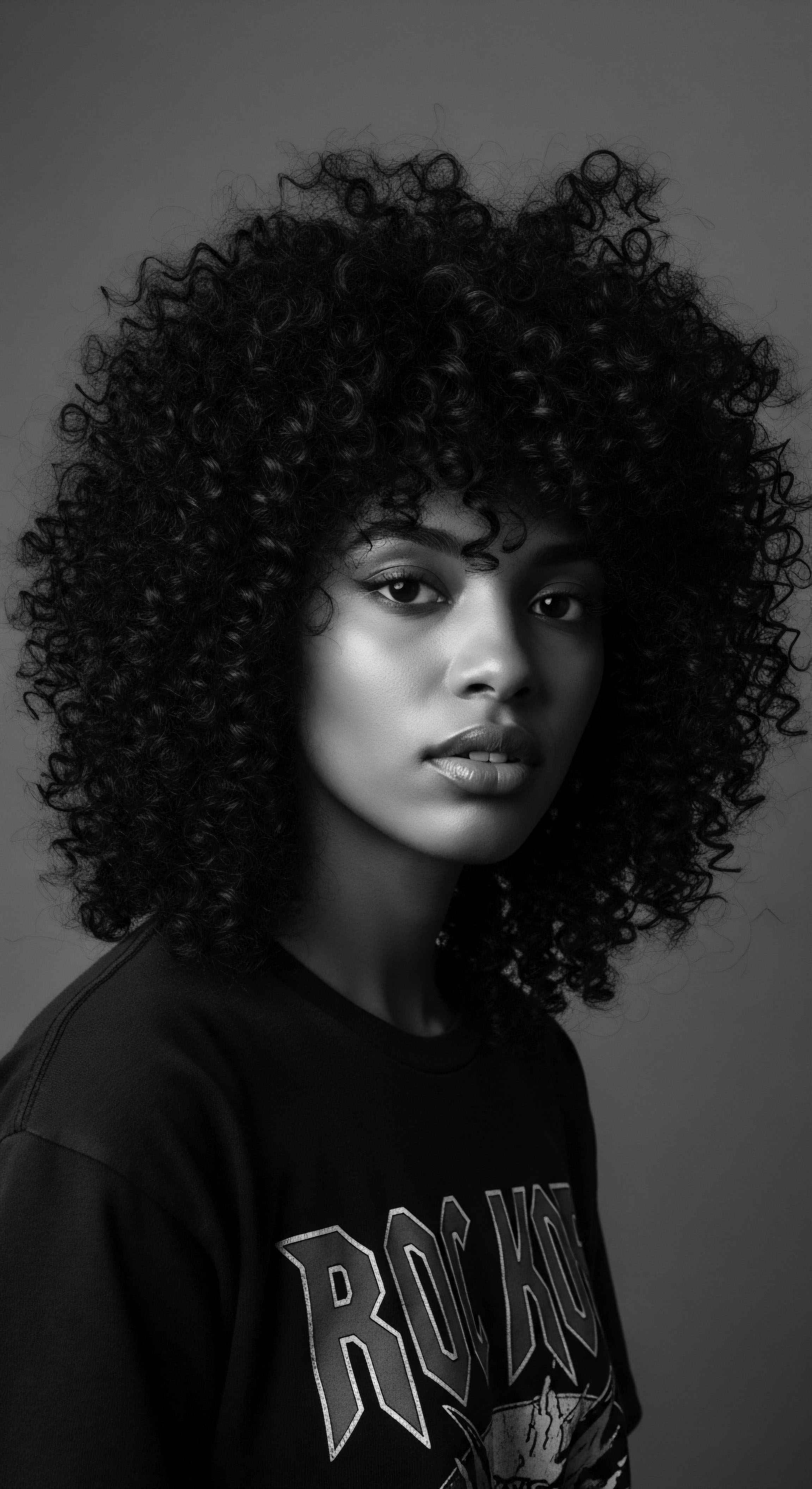
Holistic Care from Past Generations
Ancestral societies viewed hair care as an integral part of holistic well-being, where physical health, spiritual harmony, and community connection intertwined. This perspective contrasts with the often segmented, problem-solution approach of modern beauty. Traditional coloring methods, when understood within this holistic framework, transcend simple aesthetic alteration.
For example, the Yoruba people of West Africa traditionally used indigo not only for its rich color but also for its purported medicinal properties, including dandruff prevention and skin inflammation treatment (Incar Petroleum, 2024). This dual benefit exemplifies a care philosophy where every application served multiple purposes.
Such practices highlight a comprehensive approach to hair health:
- Ingredient Sourcing and Purity ❉ Traditional methods sourced ingredients directly from nature, ensuring purity and minimizing exposure to synthetic compounds. This approach aligns with the growing modern desire for clean beauty products.
- Gentle Application Techniques ❉ The methods of applying traditional colorants were often slow, involving gentle massaging into the scalp and coating the hair, which inherently reduced physical stress on the hair strands. This contrasts with the often vigorous application of modern chemical processes.
- Integration with Protective Practices ❉ Traditional coloring often accompanied protective styling. For instance, the reddish otjize paste of the Himba was applied to intricate dreadlocks or plaited styles, providing environmental protection and maintaining the integrity of the hair underneath (Wikipedia, 2023), (The Guardian Nigeria News, 2022). This synergistic relationship between coloring and styling is a valuable lesson for modern routines seeking longevity and strand health.
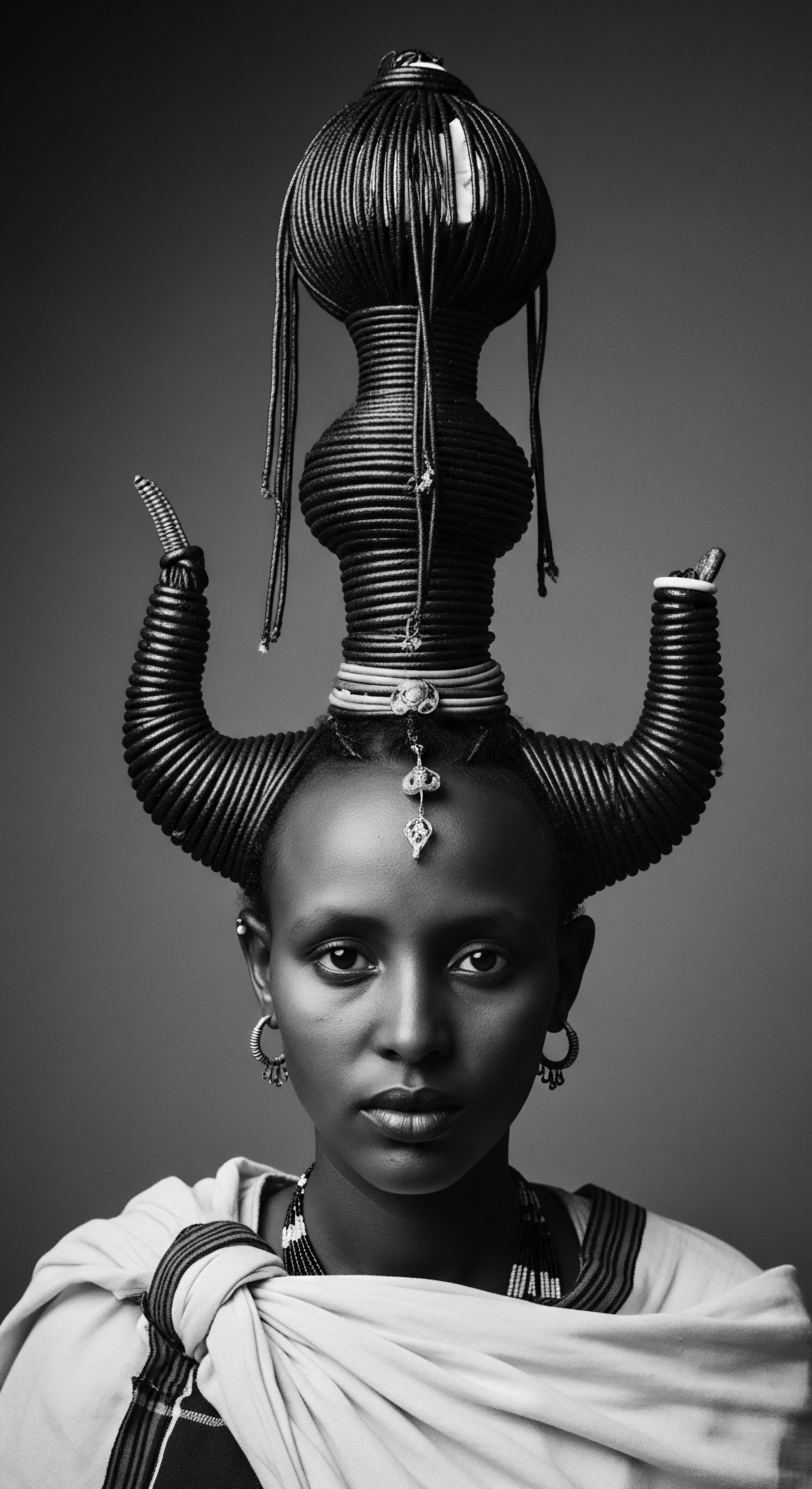
Can Traditional Coloring Support Hair Resilience and Growth?
The resilience of textured hair, so often challenged by environmental factors and historical biases, finds allies in traditional coloring methods. Many natural dyes, like henna, work by coating the hair shaft rather than chemically altering its internal structure, leading to less damage and improved hair strength (Anker Coiffeur, 2024), (Cultivator Natural Products, 2024). This coating effect can also help to smooth the cuticle, reducing porosity and thereby assisting textured hair in retaining its vital moisture. Scientific analysis of some plant-based dyes validates their antioxidant, anti-inflammatory, and antimicrobial properties, offering a scientific lens through which to understand the benefits observed ancestrally (Recent Advancements in Natural Plant Colorants Used for Hair Dye Applications, 2022).
Consider the anecdotal evidence, now increasingly supported by research, regarding the ability of ingredients like amla to contribute to overall hair vitality and potentially reduce premature graying (5 reasons natives have lustrous locks, 2017). The continued use of such ingredients for hair wellness over millennia speaks to their efficacy and a deep, empirical understanding passed through generations (Hairmetto, 2020).
The enduring wisdom of ancestral hair practices offers a guide for contemporary routines, supporting hair resilience with natural elements.
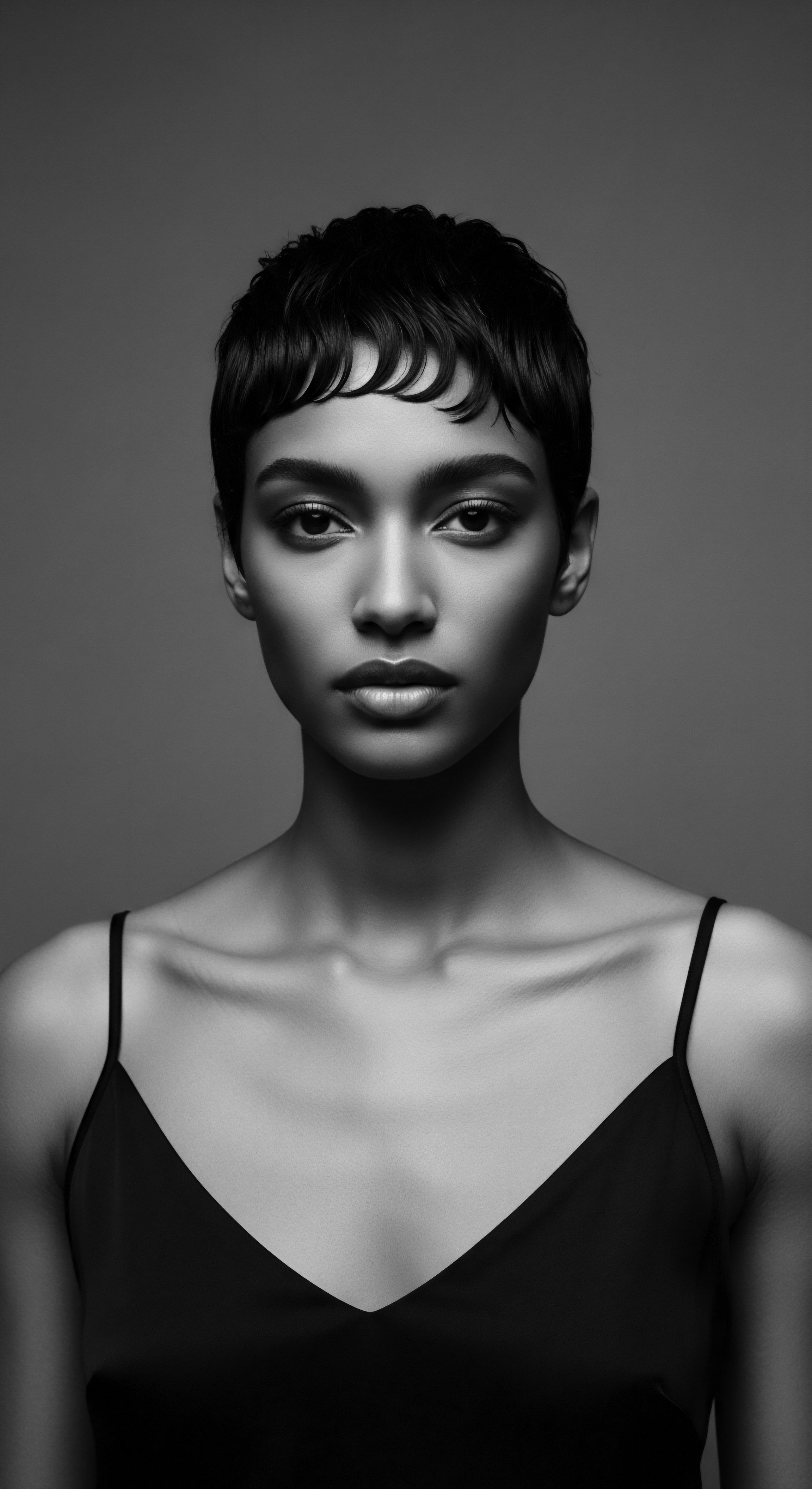
Nighttime Rituals and Bonnet Wisdom
The ritual of nighttime care, particularly the use of head coverings like bonnets, has long been a foundational practice for preserving textured hair. While not directly a coloring method, the longevity of color, especially natural pigments, and the overall health of the hair are profoundly affected by how it is protected overnight. Ancestral practices of wrapping hair or utilizing specific protective styles, such as threading ( Ishi Owu among the Igbo) (Ozi Ikoro, 2024), (SCOREline, 2024), ensured styles lasted and hair retained moisture. This preventive approach minimizes friction, tangling, and moisture loss, all critical for maintaining the vibrancy of colored hair and the health of textured strands.
The bonnet, often seen as a modern accessory, finds its roots in these historical traditions of head wrapping and protection. Its function is to shield hair from the drying effects of cotton pillowcases and to preserve style, thereby extending the life of any coloring treatment. A traditional coloring method, which generally demands more time and a gentler process, aligns seamlessly with a hair care routine that prioritizes protection and preservation, including diligent nighttime rituals. The continuity from wrapping colored hair with traditional fabrics to donning a silk bonnet reflects an unbroken chain of generational wisdom, adapting practices for modern convenience while retaining their fundamental purpose.

Addressing Modern Concerns with Ancient Answers
Contemporary textured hair routines often grapple with concerns like dryness, breakage, and scalp sensitivities. Traditional coloring methods, by their very nature, can offer gentler alternatives to chemical dyes which can exacerbate these issues (Anker Coiffeur, 2024). For those seeking vibrant color without compromising strand integrity, plant-based options provide a compelling solution. The gradual, translucent color provided by many natural dyes also avoids harsh demarcation lines, allowing for a softer regrowth, which is particularly suitable for maintaining consistent color over time without constant, damaging touch-ups.
Moreover, the shift towards natural ingredients speaks to a desire for greater autonomy over one’s hair care choices, a movement that echoes the historical reclaiming of textured hair as a symbol of pride and resistance (The Queen’s Journal, 2025). By embracing ancestral coloring techniques, individuals not only enhance their hair’s physical attributes but also reconnect with a lineage of self-expression and cultural affirmation that runs as deep as their roots. The questions that follow stem from the core of Roothea’s perspective, anticipating the queries of those seeking to connect hair science, care, and the stories of generations.
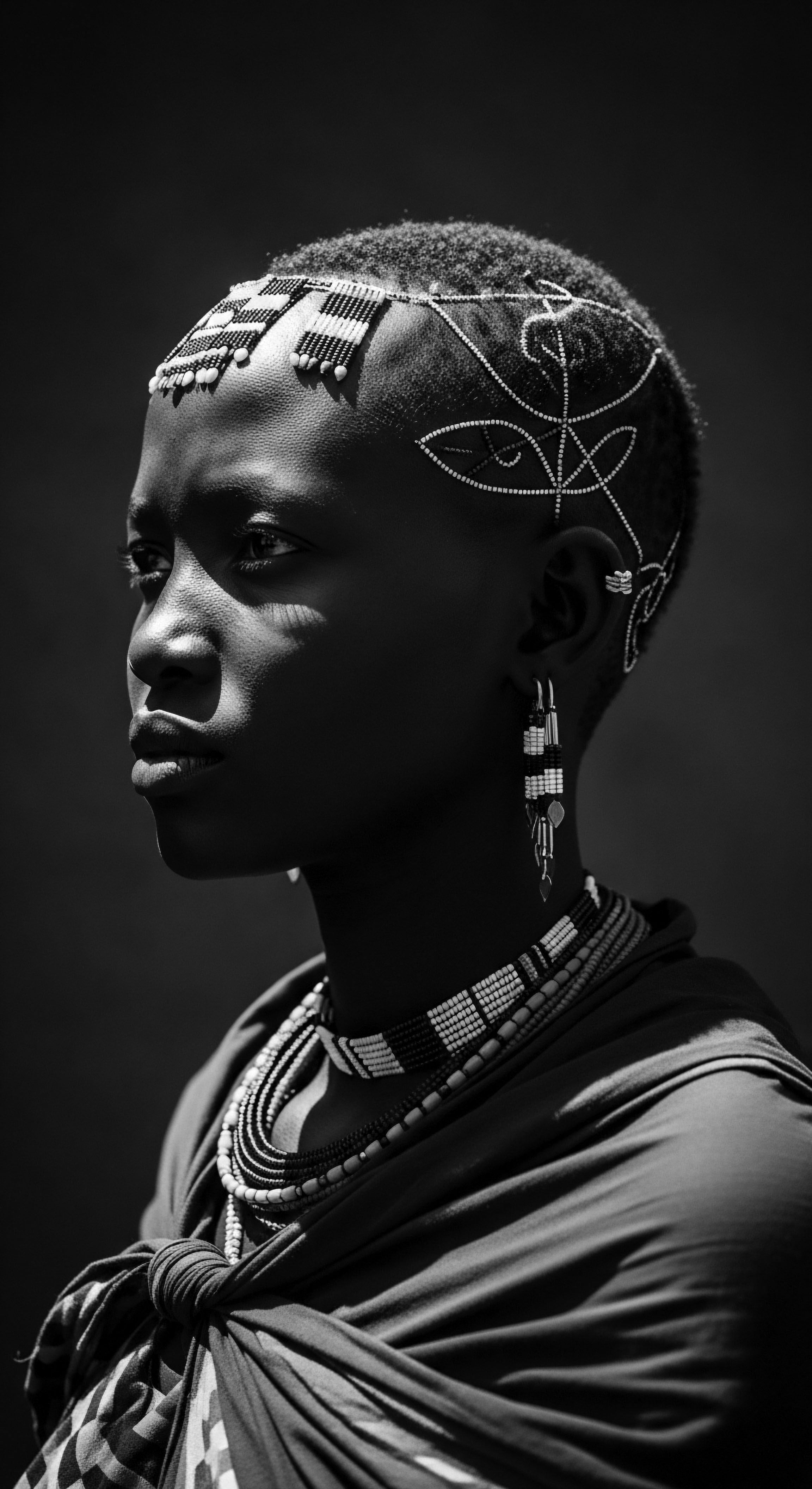
Reflection
The whisper of old ways, carried on the very breath of generations, holds profound resonance for our modern textured hair care routines. We have walked through the anatomy of the strand, understanding its ancestral observations, and touched upon the deep ceremonial significance of color. We have seen how the deliberate, gentle touch of plants and earth-derived pigments supported hair’s innate resilience, fostering health beyond mere aesthetics. This expedition reveals that traditional hair coloring methods are not quaint remnants of a forgotten past; they are living legacies, capable of enhancing contemporary practices with a profound sense of heritage.
The Himba’s otjize, the Yoruba ‘s indigo, the Igbo ‘s camwood — these are more than just dyes. They are testaments to an enduring relationship with the earth, a deep understanding of natural chemistry, and a reverence for hair as a vital aspect of self and community. To invite these traditions into our modern care is to acknowledge that hair health is not simply a biological equation. It is also a spiritual inheritance, a cultural marker, and a canvas for identity.
When we choose a plant-based color, we are not just changing a hue; we are participating in an ancient ritual of beautification and well-being, an affirmation of our connection to a lineage of strength and splendor. This is the enduring spirit of the strand, a testament to how the wisdom of our ancestors continues to illuminate our path forward, guiding us toward practices that honor both our bodies and our collective past.
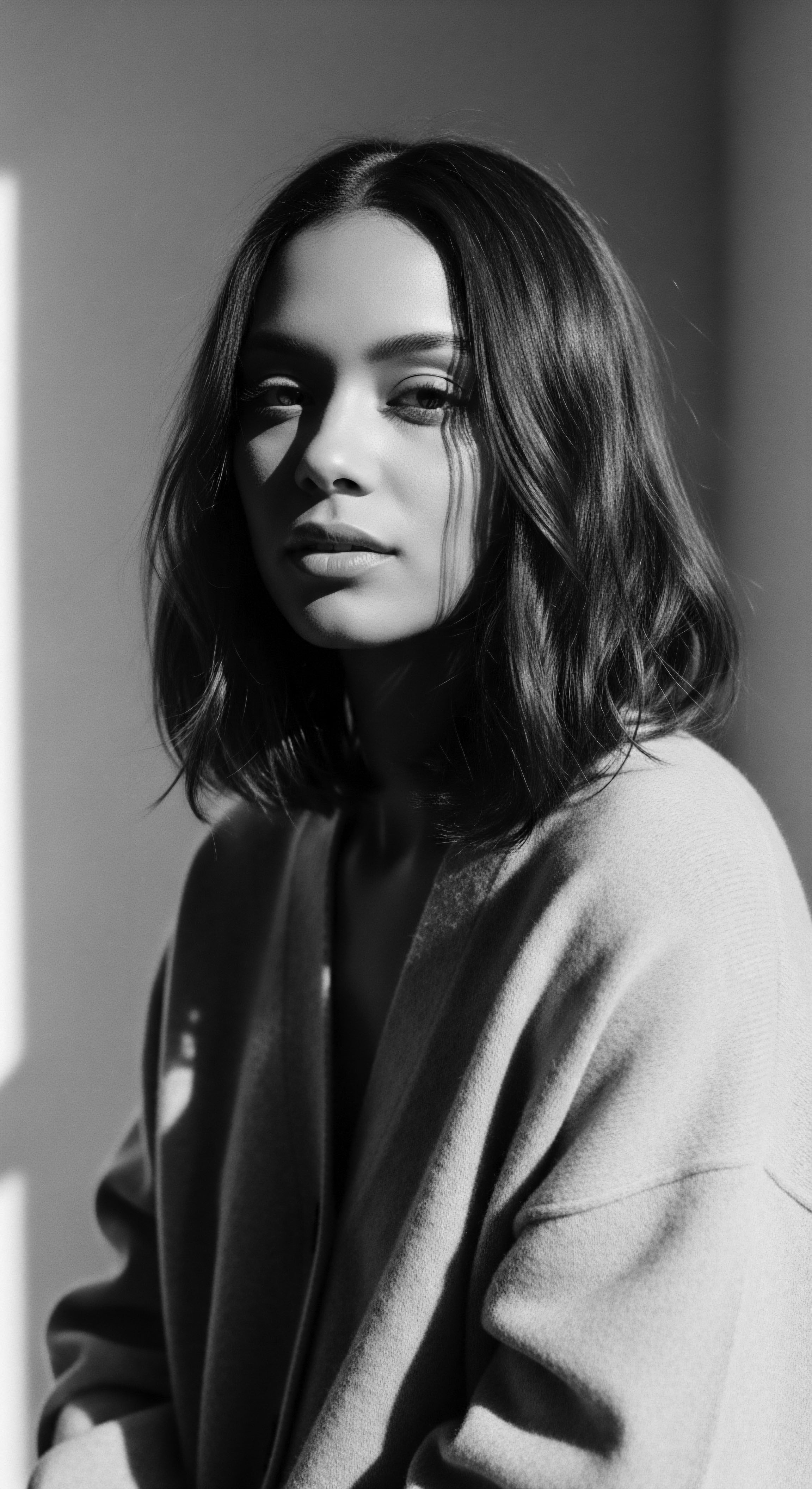
References
- BLAM UK CIC. (2022). The history of Black Hair.
- Crittenden, A. N. & Marlowe, F. W. (2013). Parental investment in the Hadza ❉ Testing the importance of allomaternal care. Human Nature, 24(2), 115-132.
- Cultivator Natural Products. (2024). Top 5 Benefits of Switching to Organic Hair Color.
- EblackMedia. (2024). The Himba People of Namibia in a Modern World.
- Hairmetto. (2020). What can we learn from our ancestors when it comes to hair growth.
- Incar Petroleum. (2024). Royal Secrets ❉ Traditional Yoruba Beauty Practices.
- Jacobson, L. & Van Der Merwe, E. (2008). Traditional cosmetics from ancient Namibia ❉ An archaeological and ethnographical study. Journal of African Archaeology, 6(2), 241-260.
- Marianopolis College. (n.d.). Dyes and pigments of Indians.
- Ozi Ikoro. (2024). Adorned Identities ❉ Traditional Hairstyles of Igbo Women and Girls (1900-1930).
- Recent Advancements in Natural Plant Colorants Used for Hair Dye Applications ❉ A Review. (2022).
- Reshma Beauty. (2024). The History and Cultural Significance of Henna in Hair Coloring.
- RPGnet Forums. (2025). Real world ancient historical wild colors of hair dye?
- Rthvi. (2024). Exploring Ancient Hair Care Rituals ❉ Timeless Practices for Modern Hair Wellness.
- SCOREline. (2024). THE EVOLUTION OF TRADITIONAL IGBO HAIRSTYLES ACROSS THE ERAS.
- Skillshare Blog. (2022). Drawn From Nature ❉ A Guide To Natural Pigments.
- The Guardian Nigeria News. (2022). Otjize ❉ The Red Beauty Miracle Of The Himba People.
- The Queen’s Journal. (2025). History, identity, and community ❉ The significance of Black hair.
- Universidad Complutense de Madrid. (2024). The Harmonization of Identities and the Roots of Resistance through an Africanfuturist Lens in Nnedi Okorafor’s Binti ❉ The Complete Trilogy1.
- Wikipedia. (2023). Otjize.
- Yoruba Indigo. (n.d.).
- 22 Ayur. (2022). The Ancient Natural Ways of Hair Care Across Continents.
- Anker Coiffeur. (2024). The Science Behind Natural Hair Dyes.
